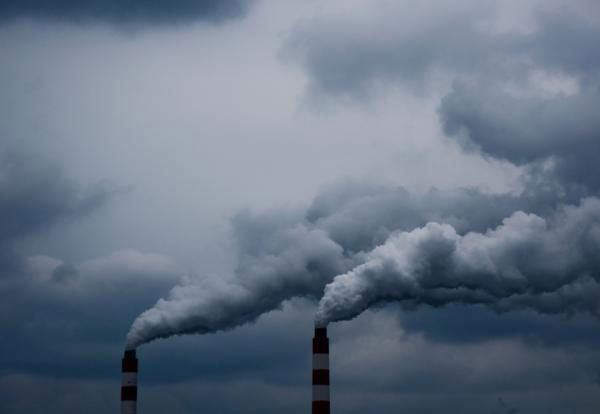


A thermal power plant in China discharge vapor and carbon dioxide through two chimneys on March, 2012. [Photo: thepaper.cn]
Today we're bringing you the 2nd report in our series on China's role in combating global climate change.
This edition focuses on the energy conservation and emission reduction targets set out in the last 5-year plan.
Wu Shunze, Vice President of Chinese Academy for Environmental Planning, explains his interpretation of the binding carbon emissions targets.
"Those binding targets are in accordance with our country's situations, as well as the internal demand for our current development. The core is toughening the binding, solidifying the responsibilities, and increasing the proportion of environmental protection and energy conservation. It's actually a reversed pressure mechanism for economic transition and development, and it could promote the improvement of ecological systems as well."
Up till now, China has made remarkable progress in promoting energy consumption and emissions reduction.
Statistics show that China's energy consumption and carbon dioxide emission per unit of GDP last year dropped by nearly 30 percent and 34 percent respectively over a decade ago.
At this rate, China is going to be able to achieve the binding targets set in the 12th 5-year Plan as scheduled.
For his part, Wu says that the achievements China has made so far are embodied in five factors: a series of strategic arrangements, strengthening targets and responsibilities as well as giving full play to the initiatives of local authorities, making remarkable efforts to upgrade and transition economic and energy structures, the promotion of a great number of relevant infrastructure projects, and optimizing relevant policies and systems.
However, he also mentions that some imbalances remain.
"Some of the targets are difficult to achieve in certain areas. Specifically, there are still wide gaps between China and the world in two main aspects: the comprehensive technological progress level and the target of energy consumption and pollutant discharge."
He adds that as far as the technological progress or utilizing energy or resources are concerned, China is still at a 'follower' level rather than a 'pacesetter.'
Wu also mentions some next steps that China should take for further improvement.
"Energy conservation and emission reduction is a long-term goal, thus perseverance is of the essence due to the tasks' arduousness and complexity. There are two factors which require further improvement. First, there is space for the whole society to participate in the goal of green consumption. Secondly, a mechanism of lasting effect needs to be built."
At a meeting of National Leading Group on Climate Change, Energy Conservation and Emissions Reduction earlier on June, Chinese Premier Li Keqiang stressed that it is crucial to implement structural adjustments as well as to upgrade development level so as to both grow the economy and at the same time improve environmental quality.
 Shocking scenes found in 4000-year-old earthquake relic
Shocking scenes found in 4000-year-old earthquake relic Female soldiers add color to military parades
Female soldiers add color to military parades Taiwan campus belle with gorgeous look
Taiwan campus belle with gorgeous look  Stunning photos of China’s fighters and airborne troops
Stunning photos of China’s fighters and airborne troops Mums stage breastfeeding flash mob
Mums stage breastfeeding flash mob PLA South China Sea Fleet conducts live fire exercise
PLA South China Sea Fleet conducts live fire exercise Beauty of Tsinghua University transforms into car model
Beauty of Tsinghua University transforms into car model Official shot having sex with two college girls
Official shot having sex with two college girls Moscow “spider-man” climbs Chinese skyscraper
Moscow “spider-man” climbs Chinese skyscraper Daring duo
Daring duo Sorry is the hardest word for Abe
Sorry is the hardest word for Abe Coolest ice structures from around the globe
Coolest ice structures from around the globe Pecs appeal Shirtless male models flex their promo power
Pecs appeal Shirtless male models flex their promo powerDay|Week